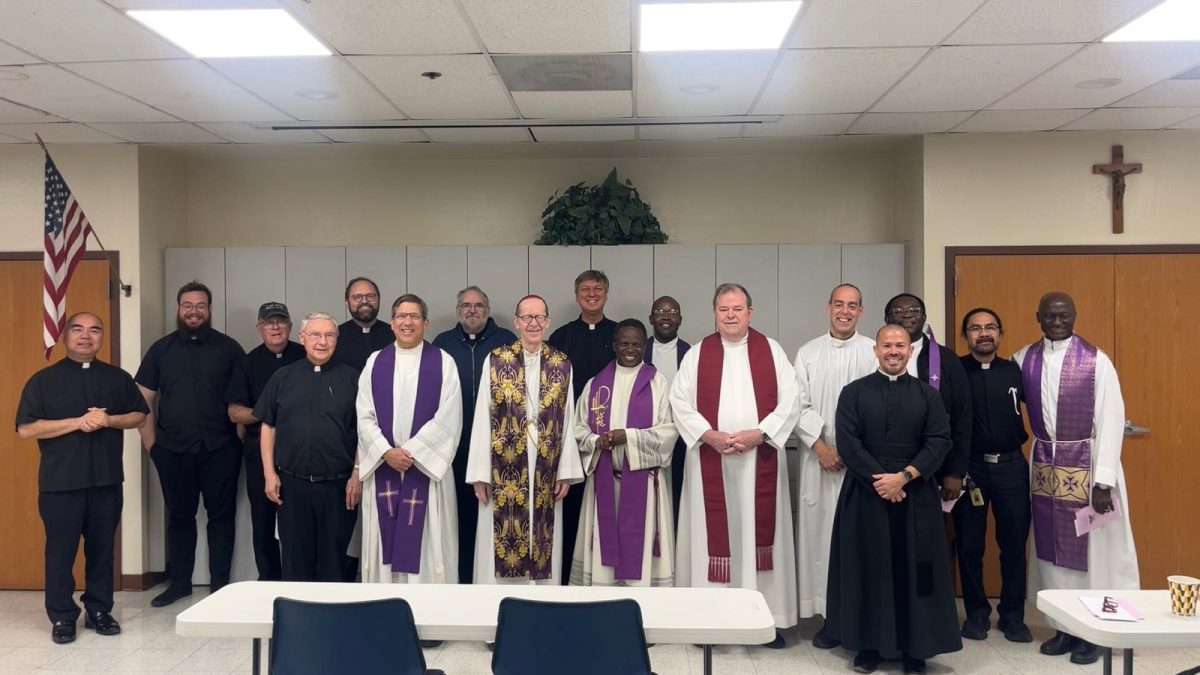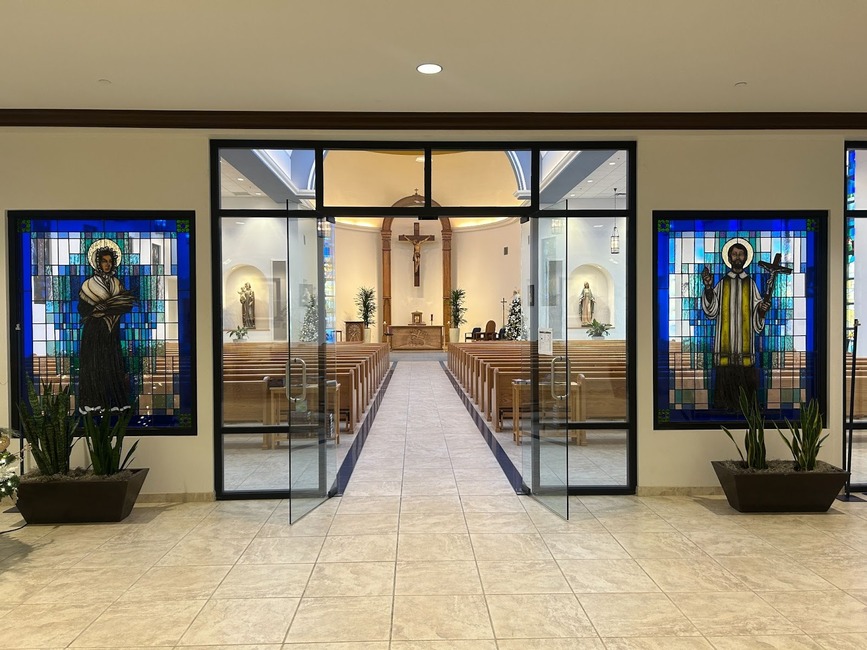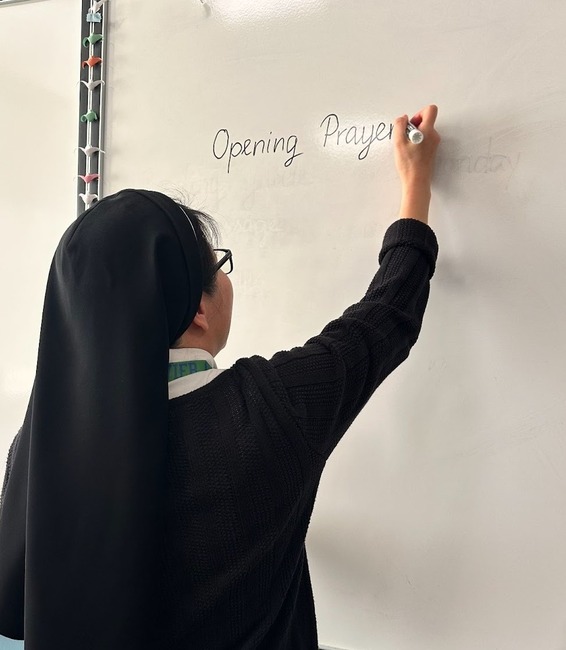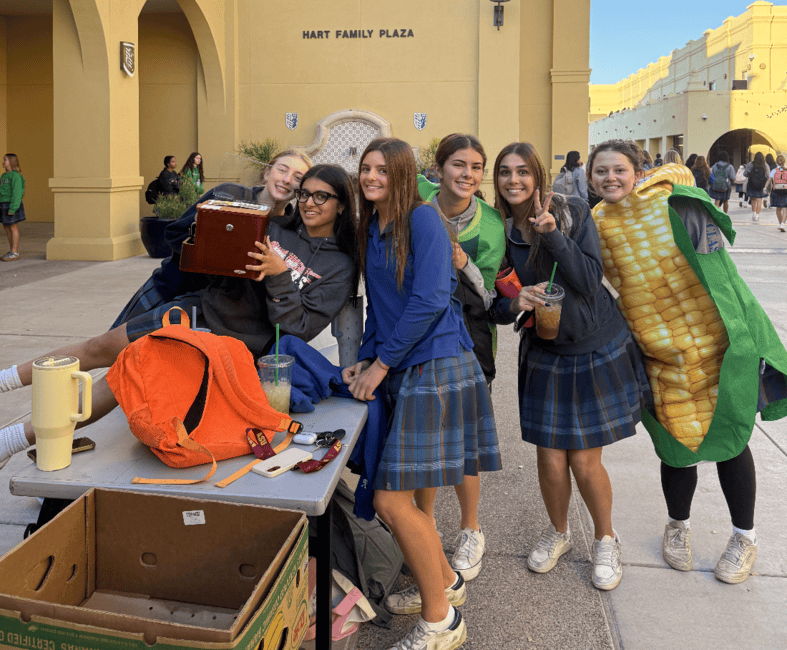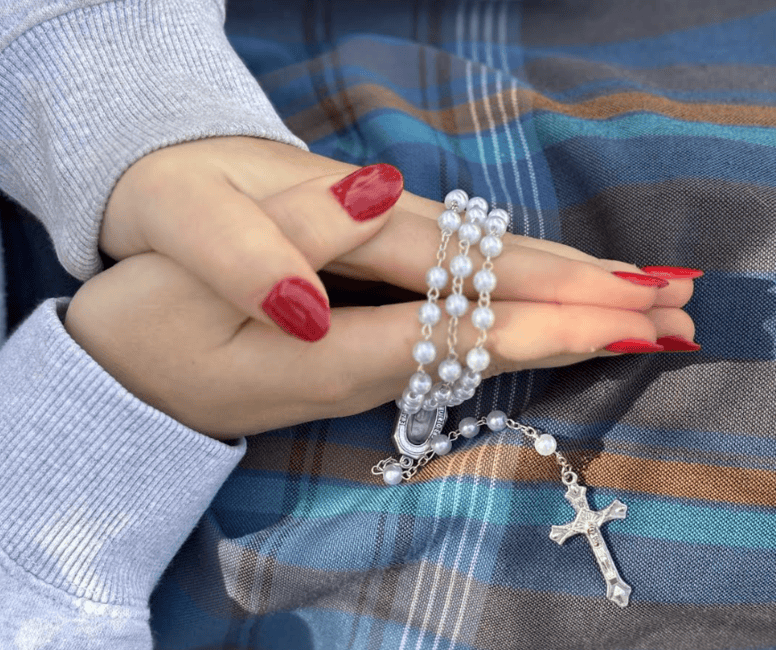Similar to Xavier students who attend school daily in their uniform skirts, polos and socks, Xavier chaplain Elario Zambakari is expected to be in his uniform each day. And the options can be quite complex.
A Catholic priest has four primary outfits or vestments, each made of different fabrics and colors. The outfits are significant to the church’s liturgical season, and each signifies something different. In daily life, they can be compared to formal wear for special occasions.
The first outfit worn is the cassock, a long robe, typically white or black, embellished with buttons. This garment is not worn for Mass but is often seen on a priest or a bishop as he goes about his day. The black color of the cloth symbolizes humility and simplicity in the Catholic church. A wide, colored belt called a fascia is also typically worn.
In the church, colors symbolize different liturgical seasons, events and feelings. White, red, green and purple are recognized the most. White represents light, joy and purity; red represents martyrdom, the Holy Spirit and blood. Red is worn primarily during Easter or to honor a saint killed due to his faith. Green represents anticipation and hope during ordinary time, a time that occurs between Easter and Advent, as well as during Christmas and Lent. Lastly, purple represents penance and preparation. This color is being worn right now, to prepare for the death of Jesus.
The next garment is the alb, a long robe worn during Mass. It can also be worn outside of Mass but only briefly. Typically white, the alb signifies purity and baptismal vows.
Next, Zambakari wears a long, narrow, colored cloth called a stole, the only vestment that must be worn during Mass. Without the stole, the Mass may not be celebrated.
Lastly, the chasuble is a large, sleeveless garment emphasizing the priest as a celebrant of the Eucharist. The priest in this garment is often seen as a symbol of Christ.
Occasionally, a priest or deacon will wear a cope over his garments and a humeral veil in adoration. Similar to a big cape, a cope wraps around the entire body. It is another way of humbling oneself in front of the Lord and the Eucharist. By covering the entire body, the focus is entirely on the Lord. Similarly, the humeral veil is a cloak placed on the priest’s shoulders while carrying the blessed sacrament.
Noah Minton, theology teacher, and campus minister, studied at the seminary for two years before pivoting his path. He spoke about the importance of the clerical clothing a priest wears.
“It’s like a final boundary between a priest and the Lord, this reverence where one’s hands aren’t even touching the monstrance,” Minton said. A monstrance is a vessel or container in the Roman Catholic church that holds the consecrated host.
Outside of Mass, Zambakari is free to wear his clothing of choice and does not need to wear his priestly garments. However, he usually wears his collar and an all-black outfit, called his clerics, to be decipherable by the students and to signify the “death-to-self” that the color black symbolizes.
“When the people see this man wearing his clerics, they’re not seeing the man; they’re seeing Christ. It’s true death-to-self, when you put those on. You’re not yourself; you are standing in place of the Lord,” Minton said.
The priest’s vestments are washed similar to everyday clothing, but must be washed separately and stored in the chapel’s sacristy, the small room where a priest prepares for a service.
Zambakari remembers the first time he wore his vestments. “I went out to take pictures, and my friends came and said, ‘Oh, you look very good. You look like a priest!’ So, I felt very good and happy just to put them on,” he said.
Vestments of the priest date back to the Old Testament. The temple priest often wore a robe adorned with fruits and flowers to symbolize Adam and Eve in the Garden of Eden. The high priest would wear a breastplate called an Ephod, decorated with 12 gemstones to represent the tribes of Israel. These vestments are special and have always reminded people that during the liturgy, Christ meets people in ordinary time and connects with them. When these vestments are on, Zambakari must be mindful of his role as a priest.
“The liturgy is ‘sacramental.’ Flowing from Christ’s real presence in the Eucharist, all of the liturgical signs and symbols—candles, incense, processions, artwork—all participate in revealing and making present to our five senses, to Christ, and to the whole reality of what we celebrate,” says Geoffrey Stricklin, theology teacher.
The priest’s vestments are important and they matter. The priest is a representation of Jesus. When he dresses in his vestments, he is looked up to for prayer, as a mediator between the people and God, and as a conduit for the forgiveness of sins.
“I don’t just wear them and start playing games. No, I have to be respectful. I have to show people that they have to be respectful. They have to learn from me because I model for Christ,” Zambakari said.




